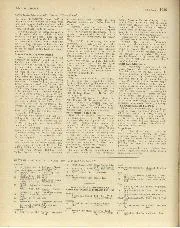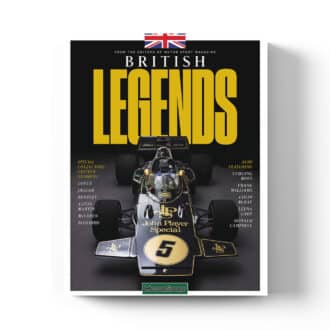

Continental Notes and News, January 1936
By OUR CONTINENTAL CORRESPONDENT Teutonic Thoroughness I wonder how many spectators 'at a Grand Prix realise the immense amount of preparation that has gone towards the perfection of the cars…
THE LANCIA “DILAMBDA” HIGHLY EFFICIENT EIGHT-CY LINDER OF UNIQUE DESIGN
many cars of to-day base their claims to indi viduality on such trifling points of design or equipment, that their specification might almost equally well serve for nine cars out of
ten. There are, however, still a few designs which break new ground regardless of the common herd, and of these the latest Lancia product stands out as something of absorbing interest to all students of automobiles.
Original Features.
In many respects it follows the practice so well proved by the famous “Lambda,” in the way of independent front springing, and the narrow angle V-type engine, but it many others it is an entirely new vehicle.
Apart from technical details, the greatest change is in its appearance, and a friend who saw the car we were testing on behalf of MOTOR SPORT immediately exclaimed “But what a magnificent looking car I ” There was a distinct note of surprise in his voice which showed that it had better lines than he had expected.
The ” Lambda ” which made such a wonderful name for itself as a devourer of lon&distances, and a car for high average speeds on any surface, was not realty pleasing to the aesthetic observer. Practical and business-like it certainly was, and to the eye of the engineer, a proposition inspiring interest and confidence, but to the normal onlooker it appeared somewhat unusual, and therefore disturbing. The Dilambda, while retaining the essentially simple and practical outlines which have made Italian automobile engineering a byword for neatness and efficiency, has in addition a beauty and sleekness of line which makes it stand out as remarkable even in these days of pleasing coachwork. One also has the comforting knowledge that the appearance does not flatter to deceive. The performance
is much higher than even the appearance leads, one to expect, and this is as it should be. Nothing is more disappointing than a very snappy looking vehicle which does not go. A first glance at the illustrations of this car might lead one to ask why they should appear in this journal at all, as seemingly belonging more to the town-carriage class. In actual fact it belongs to both classes.
We first took the car over in the heart of London and our first experience of it was in the guise of a town carriage. In this capacity its smoothness and comfort considerably exceed the majority of cars, built for this purpose alone. The remarkable life of the engine at a touch of the pedal, soon suggests, however, that this is only one side of its character, while the steering, of which more anon, has a “live “feel which is not usually associated with the dull, low-geared mechanism of a town motor.
Vibrationless Engine.
The smoothness of the engine is of course due to its original design. It has eight cylinders, but it is smoother than the majority of ” eights “due to their arrangement. The narrow angle V engine, amounting to a slightly “staggered ” Straight-8. is of course a familiar feature of the old 4-cylinder model. In this case, however, its advantages are even more marked. The chief of these is the fact that it enables a crankshaft little over half the normal length to be used, and therefore of greatly increased rigidity. A really rigid 8-cylinder crankshaft is, with the normal arrangement, a very difficult thing to design, as the great overall length gives opportunities for every sort of vibration. In the Lancia the engine is absolutely smooth at every point of its range, and this, combined with the fact that its designer has experience of motor racing from the very earliest days, gives it an extraordinary performance. (Cordintied overleaf)
As soon as space on the road permitted, a touch of third gear made the car surge up to a mile-minute in a few seconds, and she was so quiet and steady that only the instruments, and the flashing past of the scenery, gave an inkling that we were cruising at 70 m.p.h., with only a small throttle op e ni ng . Fortunately the brakes, famous on the old Lambda, are even better and smoother in this model, and 60 ft. is a comfortable -stopping distance from 40 m.p.h. The open road also gave full opportunity to appreciate t h e
e steering. Although light and easy at low speeds, it is fairly high geared, and this makes it very pleasant for fast travelling. Road shocks have no effect on the wheel and yet the steering is not dead. One can feel, all the time, exactly what the front wheels are doing, and can place the car with perfect accuracy under all conditions. The model tried was new and slightly stiff, but even so 80 m.p.h. seemed to call for little effort, and one got the impression that on long straight stretches, such as the tree-lined highways of France, this speed could be
held mile after mile without tiring. Also, the fact that these same highways are in some cases far from smooth would not matter in the least. We purposely tried the car at speed over some very uneven stretches of road, and at once found that the independent front wheel springing was as efficient in practice as it is desirable in theory, while bad roads, which in many cars compel one to lose considerable time on a long run, had practically no effect. Although the gear shift, once one is used to it, is per fectly simple and
the lever admirably placed, the power and flexibility tend to make one lazy about changing. While on long climbs the indirect gears give increased performance and control, for normal needs in this country, one is apt to use top gear more and more as one gets used to the car. After a considerable amount of fast work on main roads, on which the maximum speed reached was some 84 m.p.h., we u4rned off the beaten track in favour of some of the rough and rural ways which are chiefly encountered in trials. On these narrow winding Continued on page 89
lanes the great handiness of the car became even more apparent. Whereas on the broad highway it is good enough to drive within a foot or so, under these conditions inches become the standard of measurement, and we found that in spite of the very considerable size of the car, a better speed could be safely maintained than on most vehicles of much smaller dimensions. Many riders will know the sensation of cornering on a well designed speed boat such as a Chris-Craft, which
actually banks inwards automatically. The sensation on the Lancia was in some way similar to this. Such was its steadiness, and complete absence of rolling of swinging, that it gave this impression.
The car is obviously designed as a long distance high speed car capable of carrying 5 or 6 persons in complete comfort and protection. While as a town carriage it would satisfy the most fastidious, it is not until long distances have to be covered with the minimum of fatigue and without loss of time, that its really abnormal qualities are realised.
For those who favour an open car there is a model to suit them, but although we are in general apt to regard sporting motoring as incompatable with closed coachwork, this seems to be a case, where its usual disadvantages in the way of reduced performance and heavier handling are absent, while its very real advantages in this climate of ours make an especially strong appeal.



